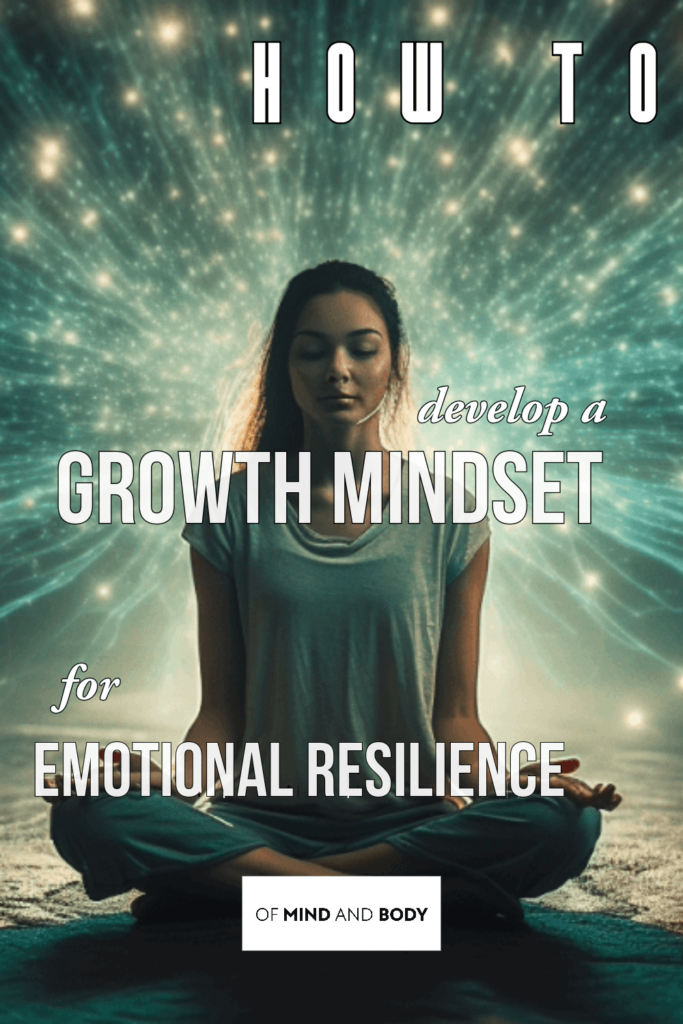
The Intersection of Growth Mindset and Resilience
Welcome, dear reader, to a transformative journey—one that merges the realms of growth mindset and emotional resilience. Have you ever wondered how some people bounce back from setbacks while others crumble? The secret often lies in developing a growth mindset for emotional resilience.

What is a Growth Mindset?
A growth mindset, as defined by CarolS Dweck PhD, is the belief that your abilities, intelligence, and talents can be developed over time. Imagine your mind as a garden. With the right nutrients—learning, effort, and perseverance—your abilities can bloom. The psychological underpinning of this mindset is rooted in the idea that your brain is malleable, capable of growth and change.
In a previous article we pondered; why your mindset is key to improving your well being.
The summation that ‘those who adopt a growth mindset tend to thrive on challenges and see failure as an opportunity for growth’ offers a glimpse into the expansive potential that could be ours through a shift in mindset.
However, the aim of this article is to answer the question; how can we cultivate a growth mindset for greater emotional resilience?
The answer is to challenge the very bedrock of your existing mindset, to excavate the fossilised beliefs that have long been entombed, obstructing the flow of your inner potential.
Your task is to weed out the thorny brambles of fixed convictions that have ensnared your spirit, preventing the blossoms of resilience from reaching towards the nourishing light of growth. It’s a journey that calls for the alchemy of self-awareness, transforming limiting beliefs into limitless possibility.
The Symbiosis of Growth Mindset and Psychological Resilience
A growth mindset and psychological resilience are like two peas in a pod. One nurtures the other. When you believe in your ability to grow, you’re more likely to bounce back from setbacks. It’s a symbiotic relationship that empowers you to face life’s challenges head-on.
10 Ways to Develop a Growth Mindset for Cultivating Emotional Resilience
1. Embrace Challenges as Learning Opportunities

Life is a series of challenges, some small and some monumental. These challenges can either be roadblocks or stepping stones, depending on how you approach them. The key to turning challenges into opportunities for growth lies in your mindset. When you embrace challenges, you’re not just overcoming obstacles; you’re also gaining invaluable life lessons that contribute to your emotional resilience.
The Power of Facing Challenges Head-On
When you confront a challenge directly, you’re essentially saying, “I am bigger than this problem.” It’s a powerful affirmation of your own capabilities. Avoiding challenges may offer temporary relief, but it also robs you of the chance to grow and learn. Facing challenges head-on is like flexing your resilience muscle—the more you do it, the stronger it gets.
The Role of Journaling in Learning from Challenges
Journaling is a potent tool for self-reflection and growth. When you journal your experiences, you’re not just documenting events; you’re also capturing your emotional and cognitive responses to them. This practice allows you to dissect the challenge, understand what you did right or wrong, and identify areas for improvement.
Actionable Step: Journal Your Experience
Here’s how to make the most of journaling your challenges:
1. Identify the Challenge
Write down the challenge you’re facing in as much detail as possible. What is it that you find difficult? Why does it seem daunting?
2. Document Your Feelings
Before tackling the challenge, jot down how you feel. Are you anxious, excited, fearful? This emotional snapshot serves as a valuable point of reference for later.
3. Outline Your Approach
Before diving in, outline how you plan to tackle the challenge. This could be a step-by-step strategy or a general approach.
4. Take Action
Now, go ahead and face the challenge. Give it your best shot, keeping in mind that the goal is not just to overcome the obstacle but also to learn from the experience.
5. Reflect and Analyse
After the challenge, return to your journal. Write down what happened, how you handled it, and most importantly, what you learned from it.
6. Celebrate or Pivot
If you successfully navigated the challenge, take a moment to celebrate your win, no matter how small. If things didn’t go as planned, that’s okay too. The key is to learn what didn’t work and pivot your approach for next time.
By embracing challenges and journaling your experiences, you’re not just overcoming immediate obstacles; you’re also building a reservoir of emotional resilience. Each challenge you face and document becomes a page in your personal playbook, a testament to your ever-growing ability to navigate the complexities of life. So the next time a challenge comes knocking, welcome it with open arms and a pen in hand.
2. Practice Mindfulness to Gain Self-Awareness

The Importance of Mindfulness in Cultivating a Growth Mindset
Mindfulness is like the soil that nurtures the seed of a growth mindset. It’s a practice that involves being fully present, aware of where we are, and what we’re doing. It’s not about silencing our thoughts, but rather observing them without judgement. By practising mindfulness, you cultivate a heightened sense of self-awareness, which is crucial for developing both a growth mindset and emotional resilience.
The Science Behind Mindfulness
Mindfulness has its roots in ancient meditation practices, but it’s also backed by modern science. Studies have shown that regular mindfulness practice can actually change the structure of your brain, increasing areas associated with emotional regulation and focus while decreasing areas associated with stress.
How Mindfulness Enhances Self-Awareness
When you’re mindful, you’re essentially tuning into your internal monologue. You become aware of each thought as it arises and passes, without labelling it as ‘good’ or ‘bad.’ This heightened self-awareness allows you to catch those fixed-mindset thoughts like “I can’t do this” or “I’ll never get better,” and gently guide your mind toward a growth mindset instead.
The 10-Minute Daily Practice
Here’s where the rubber meets the road. Dedicate just 10 minutes each day to mindfulness meditation. Find a quiet space where you won’t be disturbed. Sit comfortably and close your eyes. Focus on your breath—inhaling deeply through your nose and exhaling fully through your mouth.
Observing Your Thoughts
As you focus on your breath, you’ll notice thoughts will start to pop into your mind. That’s completely normal. The key is to observe these thoughts as if you’re a neutral third party. Don’t judge them, don’t engage with them, just let them float by like clouds in the sky.
The Role of Non-Judgment
It’s essential to approach this practice without judgement. The moment you start labelling your thoughts as ‘good’ or ‘bad,’ you step out of mindfulness and into judgement. By maintaining a stance of non–judgement, you create a safe space for your mind to explore, grow, and eventually, transform.
The Ripple Effect
You’ll find that this small investment of time has a ripple effect on the rest of your day. You’ll be more aware of your thought patterns, more in control of your emotional reactions, and better equipped to approach challenges with a growth mindset.
Tracking Your Progress
Consider keeping a mindfulness journal. After each session, jot down any insights or recurring thoughts you observed. Over time, you’ll start to notice patterns and gain deeper insights into your mindset.
The Journey of Self-Discovery
Mindfulness is not a destination; it’s a journey of self-discovery. Each session is a step towards greater self–awareness, emotional resilience, and a robust growth mindset.
By incorporating this simple yet profound practice into your daily routine, you’re laying the groundwork for a more resilient and growth–oriented life. Mindfulness is more than a practice; it’s a lifestyle choice that offers invaluable insights into your inner world.
3. Adopt a “Not Yet” Mentality: The Power of Perspective in Fostering Resilience

The Pitfall of “I Can’t”
We’ve all been there—faced with a challenge that seems insurmountable, it’s easy to say, “I can’t do this.” But this mindset is a trap. It’s a self-fulfilling prophecy that limits your potential and stifles your growth. When you say “I can’t,” you’re essentially closing the door on any possibility of success.
The Transformational Power of “Not Yet”
Enter the “Not Yet” mentality. It’s a simple yet profound shift in perspective. When you find yourself struggling or failing, instead of saying “I can’t,” tell yourself, “I haven’t succeeded yet.” This subtle change in language has a transformative impact. It reframes failure as a temporary state, a moment in time rather than a permanent condition. It opens up a world of possibilities, turning setbacks into setups for future success.
The Psychological Benefits
The “Not Yet” mentality aligns perfectly with the principles of a growth mindset. It encourages you to see challenges as opportunities for development, fostering a sense of curiosity and excitement. Psychologically, it shifts your focus from a fixed outcome to a journey of growth. This not only boosts your emotional resilience but also enhances your emotional well–being.
How to Adopt a “Not Yet” Mentality
1. Catch Yourself in the Act
The first step is awareness. Whenever you catch yourself thinking or saying “I can’t,” pause and reframe it to “Not yet.”
2. Journal Your “Not Yet” Moments
Keep a dedicated “Not Yet” journal. Write down instances where you felt like giving up but chose to adopt the “Not Yet” mentality instead. Reflect on these entries to see how far you’ve come.
3. Set Incremental Goals
Break down your challenges into smaller, manageable goals. Celebrate each “Not Yet” moment that moves you closer to your ultimate objective.
4. Seek Support
Share your “Not Yet” journey with a trusted friend or mentor. Sometimes, external validation can reinforce your commitment to this mindset.
5. Review and Reset
Periodically review your progress. If you find that you’re not making the strides you hoped for, don’t despair. Remember, it’s “Not Yet,” and adjust your approach accordingly.
The Ripple Effect
The beauty of the “Not Yet” mentality is that its benefits extend beyond the individual challenges you apply it to. It becomes a way of life, influencing how you approach obstacles in every facet of your existence—from personal relationships to professional endeavours.
Conclusion: Your Journey Towards “Yet”
The “Not Yet” mentality is more than a mindset; it’s a philosophy for life. It’s the belief that every setback is a setup for a comeback, that every failure is just a stepping stone on your path to success. So the next time you find yourself on the brink of saying “I can’t,” remember the transformative power of saying “Not Yet” instead.
4. Learn from Criticism and Feedback

The Importance of Constructive Criticism
In a world that often equates criticism with negativity, it’s easy to forget that constructive feedback is a gift. It’s a mirror that reflects not just our flaws but also our potential for growth. When we open ourselves up to criticism from trusted sources, we’re not just showing vulnerability; we’re showing a willingness to evolve.
The Right Sources Matter
The first step in this journey is to identify who these trusted sources are. It could be a mentor, a close friend, a family member, or even a colleague who has your best interests at heart. The key is to find someone who can provide honest yet constructive feedback.
1. Actively Seek Feedback
Don’t wait for your annual review at work or for a crisis to hit to seek feedback. Make it a regular practice. Whether it’s after completing a project or reaching a personal milestone, reach out to your trusted sources and ask for their thoughts. You can use questions like:
– “What do you think went well?”
– “Where do you see room for improvement?”
– “Do you have any suggestions for how I can do better next time?”
2. Take Notes
When you’re receiving feedback, it’s crucial to be present in the moment. Listen carefully and take notes. This not only shows that you value the other person’s opinion but also allows you to revisit the feedback later. Sometimes, the true essence of what’s being said only hits us upon reflection.
3. Create an Action Plan
Once you’ve gathered your feedback and reviewed your notes, the next step is to create an action plan. Identify the common themes or recurring suggestions in the feedback. Then, break them down into actionable steps. For example, if the feedback is about improving communication skills, your action plan could include:
– Enrolling in a public speaking course
– Practising active listening
– Reading books on effective communication
Implementing the Feedback
An action plan is only as good as its implementation. Set deadlines for each task and hold yourself accountable. You might even want to loop back with the person who provided the feedback, updating them on your progress. This not only shows your commitment to growth but also opens the door for more targeted feedback in the future.
The Cycle of Continuous Improvement
Learning from criticism and feedback is not a one-time event but a cycle. Once you’ve implemented the changes, seek more feedback to ensure you’re moving in the right direction. This cycle of feedback, reflection, action, and improvement becomes the cornerstone of a growth mindset, fortifying your emotional resilience over time.
By embracing criticism as a tool for growth, you’re not just cultivating a growth mindset; you’re also building a resilient spirit that can weather life’s many challenges.
5. Celebrate Small Wins: The Power of Acknowledging Your Progress

The Importance of Celebrating Small Wins
In a world that often glorifies big accomplishments and monumental changes, it’s easy to overlook the small wins that make up the fabric of our daily lives. These seemingly minor victories are the stepping stones that lead to larger successes. By celebrating them, you’re not just boosting your morale; you’re also reinforcing the growth mindset that every effort counts and every step forward is progress.
Why a “Success Journal”?
A “success journal” serves as a tangible record of your journey. It’s a place where you can capture the nuances of your achievements, no matter how small they may seem. Did you manage to meditate for five minutes today? Write it down. Did you choose a healthy meal over fast food? That goes in the journal too. The act of writing down these wins helps to solidify them in your mind, making them more real and more valuable.
How to Start and Maintain Your Success Journal
1.Choose your medium
Choose a medium that resonates with you. It could be a physical notebook, a digital app, or even voice memos.
2. Make it a habit
Make it a daily habit to jot down at least one thing you consider a win for the day. It could be as simple as waking up on time or as significant as completing a project.
3. Make time
Take time each week to review your entries. Reflect on your progress and how these small wins are contributing to your larger goals.
The Psychological Benefits
Reviewing your success journal regularly serves multiple purposes. Psychologically, it boosts your self-esteem and provides concrete evidence that you are capable of growth and achievement. This, in turn, fuels your emotional resilience, making you better equipped to handle future challenges.
Making it a Shared Experience
If you’re comfortable, consider sharing your small wins with a trusted friend or family member. This adds an extra layer of accountability and provides an opportunity for social reinforcement, further solidifying your growth mindset.
The Ripple Effect of Small Wins
Never underestimate the ripple effect that small wins can have on your life. Each small win is like a single drop of water, seemingly insignificant on its own. But collectively, these drops can create waves of change, leading to a more resilient and growth–oriented mindset.
By keeping a success journal and celebrating your small wins, you’re not just chronicling your journey; you’re also setting the stage for future successes. It’s a simple yet powerful way to cultivate a growth mindset and, by extension, emotional resilience.
6. Cultivate a Stoic Approach to Control Reactions

The philosophy of Stoicism teaches us that while we cannot control external events, we have the power to control our reactions to them. One of the most effective Stoic exercises to help you gain control over your emotional responses is the practice of negative visualisation. This technique may sound counter-intuitive at first, but it’s a powerful tool for cultivating emotional resilience and a growth mindset.
What is Negative Visualisation?
Negative visualisation is a mental exercise where you deliberately imagine worst-case scenarios or adverse events. The goal isn’t to become a pessimist but to mentally prepare yourself for challenges and setbacks. By doing so, you can better appreciate what you currently have and develop strategies to cope with potential difficulties.
The Benefits of Negative Visualisation
1. Enhanced Appreciation
By contemplating worst-case scenarios, you gain a newfound appreciation for your current situation. The things you take for granted suddenly appear more valuable.
2. Emotional Preparedness
When you’ve already mentally navigated a challenging situation, facing it in reality becomes less daunting. Your emotional resilience is strengthened because you’ve already “been there” in your mind.
3. Strategic Planning
Imagining worst-case scenarios allows you to think ahead and plan for potential setbacks, making you more proactive rather than reactive.
Actionable Steps for Practising Negative Visualisation
1. Set Aside Time
Choose a quiet moment during your day, free from distractions. Five to ten minutes is usually sufficient.
2. Choose a Scenario
Think of a situation that is relevant to your life. It could be losing your job, facing a health issue, or even smaller challenges like missing a deadline.
3. Visualise in Detail
Close your eyes and vividly imagine the scenario unfolding. Pay attention to how it makes you feel, what challenges you would face, and how others might react.
4. Identify Coping Strategies
While in this mental space, think about the steps you would take to cope with the situation. What resources would you tap into? Who would you turn to for support?
5. Reflect and Appreciate
Open your eyes and take a few moments to appreciate your current situation. Acknowledge the things you have now that you may have taken for granted.
6. Journal Your Insights
Write down what you learned from the exercise, both in terms of appreciation and potential coping strategies. Review these notes regularly to reinforce the practice.
By incorporating negative visualisation into your routine, you’re not just preparing for life’s challenges; you’re also cultivating a growth mindset that thrives on adversity. It’s a stoic practice that complements the principles of mindfulness and Cognitive Behavioural Therapy, rounding out a holistic approach to emotional resilience.
7. Use Affirmations to Foster Positive Beliefs

The Power of Positive Affirmations
Positive affirmations are more than just feel-good phrases; they’re a cognitive tool that can help rewire your brain. These affirmations serve as gentle reminders that encourage a growth mindset, helping you replace limiting beliefs with empowering thoughts. When you internalise these positive statements, you’re essentially programming your mind to approach challenges with resilience and optimism.
The Science Behind Affirmations
You might wonder, “Do affirmations really work?” The answer lies in neuroscience. Our brains have something called “neuroplasticity,” which means they can change and adapt. When you repeat affirmations, you strengthen the neural pathways that support the positive belief you’re trying to instil. Over time, this can become a self-fulfilling prophecy.
Crafting Your Personal Affirmations
Creating your own affirmations is a deeply personal process. The key is to make them specific to your needs and challenges. For instance, if you struggle with self-doubt, an affirmation like “I am capable and can handle whatever comes my way” could be powerful.
Actionable Step
Take a quiet moment to reflect on areas where you feel limited or stuck. Write down affirmations that directly address these issues. Make sure they are in the present tense and positively framed.
The Ritual of Daily Repetition
Consistency is key when it comes to affirmations. They’re not a one-and-done deal; they require daily repetition to take root in your subconscious mind.
Actionable Step
Set aside a few minutes each morning or evening to repeat your affirmations. You can do this while looking in the mirror, during meditation, or even while taking a walk. The idea is to make it a ritual, a part of your daily routine.
Measuring the Impact
How do you know if your affirmations are working? One way is to gauge your emotional resilience in situations where you’d typically feel stressed or overwhelmed. Are you handling challenges with more grace? Are setbacks easier to bounce back from?
Actionable Step
Keep a journal to track any changes in your mindset and emotional well-being. Note down instances where you felt your affirmations helped you navigate a difficult situation.
Expanding Your Affirmation Toolbox
As you grow and evolve, your affirmations may need to evolve too. Don’t hesitate to update them or add new ones that align with your current challenges and aspirations.
Actionable Step
Every month, review your affirmations. Update them to align with your current goals and challenges. This keeps your affirmation practice fresh and relevant.
Affirmations are a simple yet profound tool to foster a growth mindset and cultivate emotional resilience. By internalising these positive beliefs, you’re not just changing your thoughts; you’re changing your life.
8. Surround Yourself with Growth-Minded Individuals

The people you surround yourself with can significantly influence your mindset, behaviours, and overall outlook on life. When you spend time with individuals who embody a growth mindset, you’re more likely to adopt similar attitudes and perspectives. Let’s delve into why this is crucial and how you can take actionable steps to make it happen.
The Power of Social Influence
We’re social creatures by nature, and whether we realise it or not, our environment shapes us. The attitudes, beliefs, and mindsets of those around us can either lift us up or bring us down. When you’re around growth-minded individuals, you’re exposed to a world of possibilities, constructive feedback, and positive reinforcement. This social influence can be a catalyst for your own growth and emotional resilience.
Identifying Growth-Minded Individuals
So, how do you identify people who have a growth mindset? Look for those who:
- Embrace challenges and view them as opportunities for growth.
- Are open to constructive criticism and are willing to learn.
- Celebrate not just their own achievements but also appreciate and learn from the success of others.
- Show resilience and adaptability in the face of setbacks.
Actionable Step: Conduct a Social Audit
Take some time to evaluate your current social circle. Make a list of people you spend the most time with and note down their predominant mindset traits. Identify those who exhibit a growth mindset and make a conscious effort to spend more time with them.
Finding Mentors
Mentors can play a pivotal role in fostering a growth mindset. They can provide invaluable insights, guidance, and constructive feedback that can accelerate your personal and professional growth.
Actionable Step: Seek Out Mentors
Whether it’s a teacher, a colleague, or even a family member, identify potential mentors who embody the growth mindset principles you admire. Reach out to them and express your interest in learning from their experiences.
Virtual Communities
In today’s digital age, you’re not limited to your immediate physical environment. Online communities, webinars, and social media platforms can also be excellent avenues to connect with growth-minded individuals.
Actionable Step: Join Online Groups
Search for online forums, social media groups, or webinars that focus on personal growth, resilience, and similar topics. Engage in discussions, ask questions, and share your own experiences.
The Ripple Effect
When you surround yourself with growth-minded individuals, not only do you benefit, but you also become a beacon of growth for others. Your transformed mindset can positively influence your family, friends, and even colleagues.
Actionable Step: Be the Change
As you learn and grow, share your experiences and insights with others. Offer constructive feedback, celebrate their wins, and encourage them when they face setbacks. In doing so, you contribute to creating a growth-minded community around you.
By taking these steps, you’re not just changing your social circle; you’re creating an environment that nurtures your growth mindset and, by extension, your emotional resilience. Remember, you’re the average of the five people you spend the most time with, so choose wisely.
9. Set SMART Goals and Work Towards Them

The Essence of SMART Goals
Setting goals is a fundamental step in achieving success, but not all goals are created equal. SMART goals—those that are Specific, Measurable, Achievable, Relevant, and Time-bound—provide a structured and trackable framework to guide your journey. They serve as your roadmap, offering clear directions and milestones that keep you focused and motivated.
The Anatomy of a SMART Goal
Specific
Your goal should be clear and specific, leaving no room for ambiguity. Instead of saying, “I want to be healthier,” say, “I want to lose 10 pounds.”
Measurable
A goal should have quantifiable metrics to track your progress. For example, “I will walk 10,000 steps daily” gives you a clear metric to measure.
Achievable
While it’s good to aim high, your goal should be realistic and attainable. Setting unachievable goals can lead to demotivation.
Relevant
Your goal should align with your broader life objectives and values. If you’re aiming for emotional resilience, a relevant goal might be, “I will practise mindfulness for 20 minutes every day.”
Time-bound
Every goal needs a timeframe. Deadlines create a sense of urgency and can significantly boost your focus and commitment.
Actionable Steps to Set SMART Goals
1.Identify Your Objective
Start by identifying a broad objective you want to achieve. This could be anything from improving your emotional well-being to learning a new skill.
2.Break It Down
Once you have your broad objective, break it down into smaller, SMART goals. For instance, if your objective is to improve emotional well-being, a SMART goal could be, “I will journal my thoughts and feelings for 20 minutes every evening for the next 30 days.”
3.Create a Task List
Divide your SMART goal into even smaller tasks. Using the journaling example, tasks could include buying a journal, setting a daily reminder to write, and designating a quiet space for journaling.
4.Track Your Progress
Use apps or a dedicated notebook to track your progress. Make it a habit to review your progress at the end of each week.
5.Celebrate Milestones
Whenever you achieve a mini-goal or task, celebrate it. This could be as simple as a self-congratulatory pat on the back or as elaborate as a small treat.
The Synergy Between SMART Goals and Emotional Resilience
Setting SMART goals isn’t just a productivity hack; it’s a resilience-building exercise. When you set, pursue, and achieve small goals, you’re essentially training your brain to succeed. Each success, no matter how minor, builds your confidence and equips you with the emotional resilience to tackle bigger challenges.
Adjust and Adapt
Life is unpredictable, and you may need to adjust your goals accordingly. The key is to be flexible and adapt your goals as you go along, without losing sight of your broader objectives.
By setting SMART goals and breaking them down into actionable steps, you’re not just setting yourself up for success; you’re also cultivating a growth mindset that will serve you well in all areas of life, including your emotional resilience.
10. Practice Self-Compassion: Your Inner Ally in the Journey of Growth and Resilience

The Importance of Self-Compassion
In a world that often glorifies success and stigmatises failure, it’s easy to be your own harshest critic. However, self-compassion is the unsung hero in the journey towards a growth mindset and emotional resilience. It’s the gentle voice that says, “It’s okay, you’re human, and it’s alright to make mistakes.”
The Three Pillars of Self-Compassion
Dr. Kristin Neff, a pioneer in the field of self-compassion research, identifies three key components: self–kindness, common humanity, and mindfulness.
Self-Kindness
This is about being warm and understanding toward ourselves when we suffer or feel inadequate, rather than punishing ourselves with self-criticism.
Common Humanity
This involves recognizing that suffering and personal inadequacy are part of the shared human experience—something we all go through rather than being something that happens to “me” alone.
Mindfulness
This is a non-judgmental, receptive mindset that allows us to observe our thoughts and feelings as they are, without trying to suppress or deny them.
Actionable Steps to Cultivate Self-Compassion
1.Self-Compassion Journal
Keep a daily journal where you write down instances where you were hard on yourself. For each entry, write a compassionate response that you would give to a friend in a similar situation.
2.Positive Self-Talk
Whenever you catch yourself engaging in negative self-talk, pause and reframe your thoughts into something more compassionate and constructive.
3.Common Humanity Exercise
Whenever you’re going through a tough time, remind yourself that you’re not alone. Others have faced similar challenges and have overcome them.
4.Mindfulness Meditation
Incorporate mindfulness into your daily routine to become more aware of your thoughts and feelings. This awareness is the first step in treating yourself with more compassion.
5. Seek Support
Sometimes, it’s challenging to be compassionate towards ourselves. In such cases, don’t hesitate to seek support from friends, family, or even professionals who can provide a different perspective.
The Ripple Effect of Self-Compassion
When you practise self–compassion, you’re not just being kind to yourself; you’re also setting the stage for resilience. You’ll find that setbacks become less intimidating, and challenges turn into opportunities for growth. Self-compassion allows you to bounce back quicker, armed with valuable lessons and a renewed sense of purpose.
Conclusion: A Lifelong Companion on Your Journey
Self-compassion is your inner ally, always there to remind you that every stumble is a stepping stone on your path to growth and emotional resilience. So, the next time you find yourself wallowing in self-doubt or criticism, remember to extend the same kindness to yourself as you would to a dear friend. After all, the relationship you have with yourself sets the tone for all the relationships in your life.
By integrating self-compassion into your daily life, you’re not just nurturing your emotional well-being; you’re also fortifying your mental resilience, making you better equipped to face life’s inevitable ups and downs.

Each of these methods offers a concrete way to cultivate a growth mindset, which in turn, will bolster your emotional resilience. Remember, the journey towards a growth mindset is a continuous one, filled with opportunities for self-discovery and improvement.
Conclusion: Your Mind as Both a Sanctuary and a Work in Progress
Cultivating a growth mindset and building emotional resilience is a lifelong journey. It’s not a sprint; it’s a marathon. And every step you take is a step towards a more resilient, growth–oriented you. As we wrap up, remember that your mind is both a sanctuary and a work in progress. By integrating the teachings of mindfulness, stoicism, and CBT, you’re not just improving your mental well-being; you’re also enriching your connection to the world around you.
So, are you ready to embark on this transformative journey? Your mind is a fertile ground, waiting for the seeds of growth and resilience to be sown. Let’s start planting.


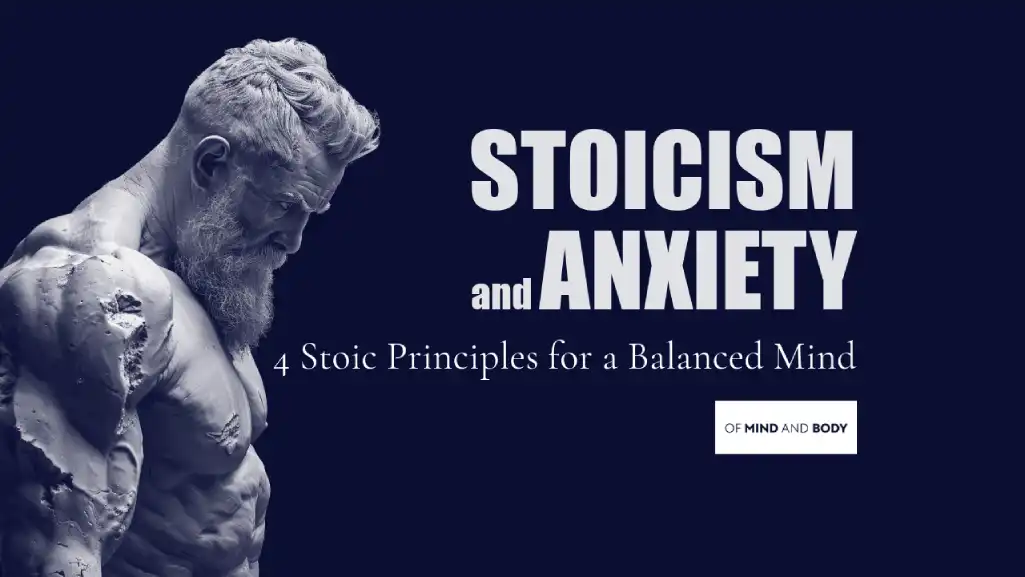
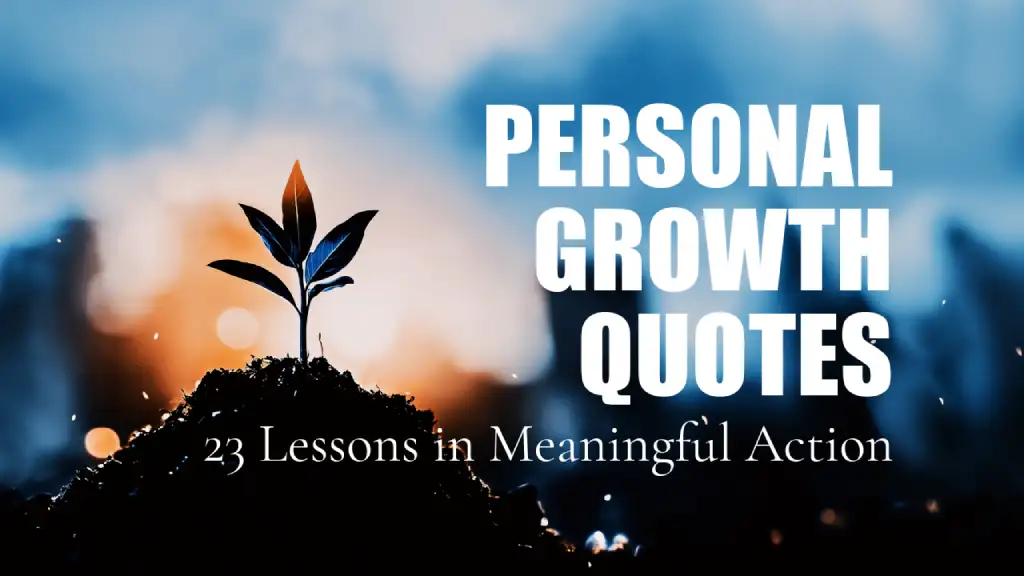






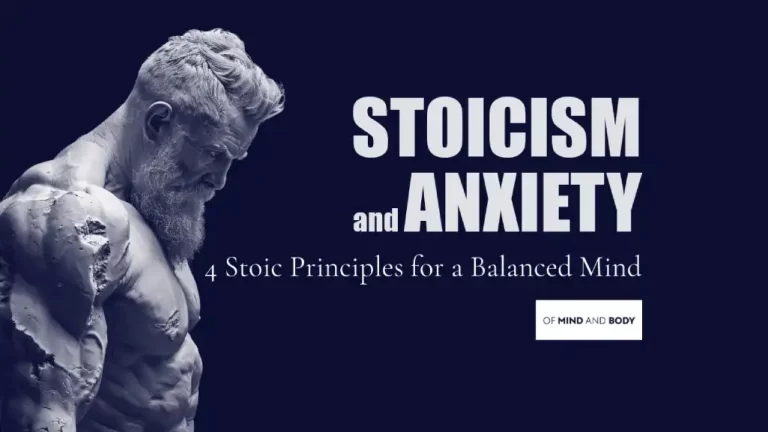
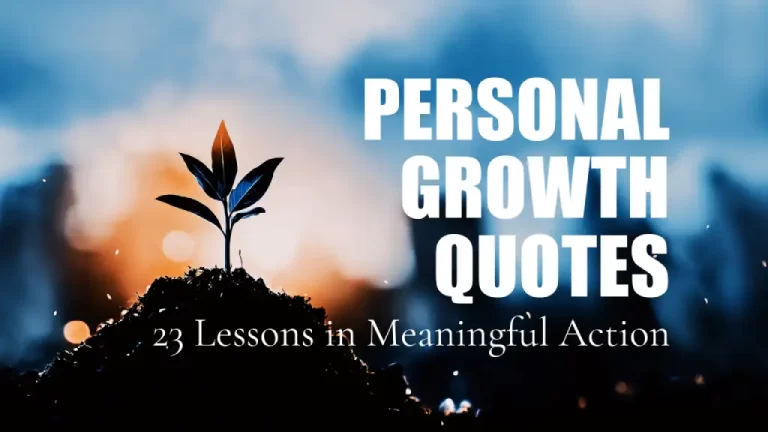

One Response